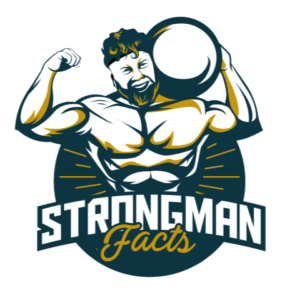Do Strongman Train Bench Press?
When we think of strongman competitions, we often imagine giant men flipping tires, lifting atlas stones, and pulling trucks. The bench press, a staple in bodybuilding and powerlifting, rarely features in these events. However, that doesn’t mean strongmen don’t bench press. In fact, the bench press is a crucial part of a strongman’s overall training regimen.
The Role of Bench Press in Strongman Training
Building Upper Body Strength
The bench press is a classic exercise for building strength in the pectorals, anterior deltoids, and triceps. For strongmen, these muscle groups are critical for performing pushing movements, whether it’s pressing a log overhead or stabilizing heavy objects. To ensure progressive overload and continual strength gains, strongmen may incorporate various bench press techniques such as increasing the weight, adding pauses, or using bands and chains for variable resistance.
Power and Stability
The bench press helps develop power through the upper body that translates into several key strongman events. For instance, the explosive power required to drive the log or axle overhead in a clean and press event is similar to the explosive push needed in a bench press. Additionally, the stability required to control a heavy barbell during bench pressing helps strongmen maintain form and balance when dealing with awkwardly shaped objects in competition.
Injury Prevention and Balance
Training for strongman events can place uneven stress on the body, leading to potential muscle imbalances and injuries. The bench press can act as a counterbalance to the pulling and lifting movements prevalent in strongman training, providing symmetrical development across the upper body. It’s also crucial for maintaining shoulder health, as it strengthens the rotator cuff muscles which are often vulnerable during heavy lifting.
Why Bench Press is Not Featured in Strongman Competitions
Event Specificity
Strongman events are designed to test functional strength and mimic real-world lifting scenarios. The bench press, while an excellent measure of upper body strength, does not directly simulate the movements found in strongman competitions.
Showmanship and Audience Appeal
Strongman competitions prioritize events that are visually impressive and engaging for the audience. The bench press, being a more static lift, lacks the dynamic and theatrical element often seen in strongman events.
Strongman Bench Press Technique
Unique Form and Technique
Strongmen may not use the same technique as powerlifters when bench pressing. They often focus on replicating the movement patterns and muscle engagements of their competition events. For example, a strongman might opt for a wider grip to better simulate the hand placement during a log press. They may also incorporate more dynamic and explosive pressing movements, akin to the plyometric push-ups, to develop the ability to generate force quickly.
The Use of Equipment
In training, strongmen might use specialized equipment like the football bar or the slingshot to enhance their bench press performance and target the muscles used in strongman events more effectively.
Bench Press Variations for Strongman Training
Incline and Decline Bench Press
Each variation of the bench press can be tailored to address the specific needs of a strongman. Incline presses improve the strength of the upper pectorals and shoulders, which is beneficial for any overhead lifting. Decline presses can increase lower pectoral strength, which might assist in the initial drive needed for flipping heavy tires. Close-grip bench presses focus on tricep strength, crucial for the lockout phase of overhead events.
Close Grip and Reverse Grip Bench Press
These variations place more emphasis on the triceps and can improve the lockout strength required in many strongman tasks.
Paused and Speed Bench Press
Paused reps increase time under tension, while speed reps develop explosive power, both beneficial for strongman performance.
Bench Press Programming for Strongmen
Periodization and Training Cycles
Strongmen must peak at the right time for competitions, which requires careful planning of their training cycles. Periodization allows them to build up their bench press strength gradually without overtraining or peaking too early. They will often have phases of training where they focus on building raw strength with heavy, low-repetition bench presses followed by phases that focus on muscular endurance or explosive power.
Accessory Work
To complement their bench press training, strongmen will often perform accessory exercises that target the same muscle groups but from different angles or with different modalities. This could include dumbbell presses, push-ups, cable flyes, or even unconventional movements like kettlebell presses, which demand balance and coordination.
Case Studies: Strongmen and the Bench Press
In-depth interviews with professional strongmen could reveal how they incorporate the bench press into their training. These athletes could share their personal records, how often they bench press during different phases of their training, and how they feel it impacts their performance in competitions.
Mitchell Hooper, the winner of the 2023 World’s Strongest Man, documents his preference to use bench as a training method for strongman, incorporating it in his push days.
Comparing Powerlifters and Strongmen
While both sports involve lifting heavy, the training for a strongman is more varied due to the nature of the events. Powerlifters train primarily for maximum strength in squat, bench press, and deadlift. In contrast, strongmen need to develop not just strength but also speed, endurance, and the ability to handle irregular objects. The bench press is one of the few common denominators in their training, but even then, it is approached differently, reflecting the unique demands of each sport.
Final Thoughts
While not a featured event in competitions, the bench press plays a vital role in a strongman’s training regimen. It contributes to overall upper body strength, power, and injury prevention, all of which are crucial for a strongman’s performance.



